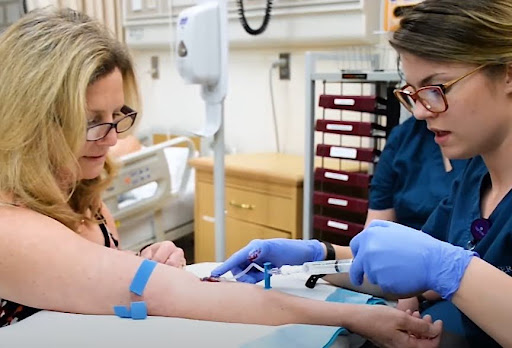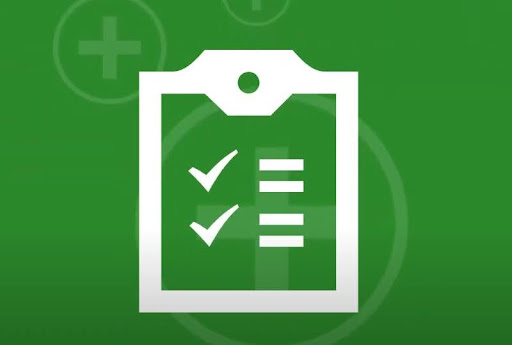Are you considering a career in nursing wondering how long does it take to become an LPN? Becoming a Licensed Practical Nurse (LPN) might be the perfect line for you. Stay with us as we discover the complete process of becoming an LPN, the career opportunities of an LPN and exactly how long does it take to become an LPN.
One of the leading benefits of being an LPN is the relatively short amount of time that takes to start working in the healthcare field. You can become an LPN in as little as one year.

The journey to becoming an LPN begins with enrolling in a state-approved LPN program, which can be found at community colleges, vocational schools, and some hospitals. These programs combine classroom learning with hands-on clinical practice. Also covers essential nursing skills such as taking vital signs, administering medications, and providing basic patient care.
After completing your LPN program, the next step is to pass the National Council Licensure Examination for Practical Nurses (NCLEX-PN). This exam assesses your readiness to provide safe and effective nursing care. With successful completion of the exam, you will be licensed to practice as an LPN.
What is an LPN?
There’s a distinct difference between an LPN, an LVN, and an RN. A Licensed Practical Nurse (LPN) is a healthcare professional who provides basic nursing care under the supervision of registered nurses (RNs) and doctors.

LPNs perform essential duties such as monitoring vital signs, administering medications, assisting with personal hygiene, and helping patients with daily activities. They work in various healthcare settings, including hospitals, nursing homes, clinics, and home healthcare.
How Long Does It Take to Become an LPN?
Becoming a Licensed Practical Nurse (LPN) is a relatively quick and efficient path to enter the nursing field. But exactly how long does it take to become an LPN? Generally, the process takes about 12 to 18 months, depending on the specific program and whether you attend full-time or part-time.

This duration includes completing the necessary educational requirements, hands-on clinical training, and passing the licensure exam. The shorter timeframe compared to other nursing roles makes becoming an LPN an attractive option for those eager to start their healthcare careers without spending several years in school.
The journey to becoming an LPN is structured yet flexible, accommodating various schedules and personal commitments, and providing a balanced blend of theoretical knowledge and practical skills essential for effective nursing practice.
How to Become an LPN?
To clearly understand how long does it take to become an LPN, you have to know the steps to become an LPN in the first place. LPNs provide essential patient care and support to doctors and registered nurses. The journey typically takes 12 to 18 months, offering a swift path to a fulfilling career. Here are the steps to becoming an LPN, from selecting the right program to passing the licensure exam and beginning your professional journey.

1. Research and Choose an LPN Program
The first step is to research and select a state-approved LPN program. These programs are typically offered at community colleges, vocational schools, and some hospitals. When choosing a program, consider factors such as accreditation, curriculum, clinical experience opportunities, and cost.
2. Meet Admission Requirements
Admission requirements can vary by program, but generally, you will need:
- A high school diploma or GED
- Passing scores on entrance exams (such as the TEAS test)
- Background checks and drug screening
- Completion of prerequisite courses (if applicable), such as biology and chemistry
3. Enroll in the Program
Once admitted, you will enroll in the LPN program. The length of these programs usually ranges from 12 to 18 months for full-time students. Part-time programs may take longer, extending the duration to about two years.
4. Complete Coursework and Clinical Training
LPN programs combine classroom instruction with hands-on clinical training. Coursework typically includes:
- Anatomy and Physiology
- Pharmacology
- Nursing Fundamentals
- Nutrition
- Medical-Surgical Nursing
- Pediatric and Geriatric Nursing

Clinical training is a crucial component, allowing students to apply theoretical knowledge in real-world healthcare settings. Under the supervision of experienced nurses, students gain practical skills by working with patients in hospitals, nursing homes, and clinics.
5. Graduate from the Program
Upon successful completion of the coursework and clinical training, you will graduate from the LPN program. Graduates receive a diploma or certificate, qualifying them to take the licensure exam.
6. Pass the NCLEX-PN Exam
The next step is to pass the National Council Licensure Examination for Practical Nurses (NCLEX-PN). This standardized exam tests the knowledge and skills necessary for entry-level nursing practice. To prepare, many graduates spend several weeks studying using review courses, practice exams, and study guides.
7. Obtain Licensure
After passing the NCLEX-PN, you must apply for licensure through your state’s nursing board. This process typically includes submitting an application, paying a fee, and providing proof of education and exam results. Once approved, you will be officially licensed to practice as an LPN.
8. Start Your Career
With your LPN license in hand, you can begin applying for jobs. LPNs work in a variety of settings, including hospitals, nursing homes, clinics, and home healthcare. The job outlook for LPNs is positive, with steady demand due to the growing healthcare needs of an aging population.
LPN Job Satisfaction and Retention
Job satisfaction and retention are critical aspects of sustaining a motivated and efficient workforce of Licensed Practical Nurses (LPNs). Here are key factors contributing to LPN job satisfaction and retention:
1. Impact on Patient Care:
LPNs often experience high job satisfaction due to the direct impact they have on patient care. Their ability to provide essential care and establish meaningful relationships with patients enhances their professional fulfillment.
2. Diverse Opportunities:
The variety of roles available within the healthcare sector allows LPNs to explore different specializations and settings, contributing to job satisfaction.
3. Professional Development:
Continuous professional development opportunities and clear career advancement pathways help LPNs feel valued and supported, promoting long-term career commitment.
4. Competitive Compensation:
Offering competitive salaries and comprehensive benefits packages is pivotal in enhancing job satisfaction and retention rates.
5. Recognition Programs:
Robust recognition programs that acknowledge the hard work and dedication of LPNs can significantly boost morale and job satisfaction.
6. Work-Life Balance:
Ensuring work-life balance through flexible scheduling, access to mental health resources, and fostering a supportive workplace culture helps LPNs manage job demands while maintaining personal well-being.
7. Supportive Work Environment:
Creating a positive and supportive work environment where LPNs feel respected and valued by their colleagues and supervisors is crucial for retention.
Frequently Asked Questions: How Long Does it Take to Become an LPN?
What factors contribute to high job satisfaction for LPNs?
LPNs often find job satisfaction through direct patient care, building meaningful relationships, diverse role opportunities, and the fulfillment of helping those in need.
How can healthcare facilities improve LPN retention rates?
Facilities can improve retention by offering professional development, competitive salaries, comprehensive benefits, flexible scheduling, and creating a supportive work environment.
Why is work-life balance important for LPNs?
Work-life balance is crucial for managing job stress, maintaining personal well-being, and preventing burnout, which enhances overall job satisfaction and retention.
What role does professional development play in LPN job satisfaction?
Professional development provides LPNs with growth opportunities, making them feel valued and supported, which is essential for long-term career commitment.
How do recognition programs impact LPN job satisfaction?
Recognition programs boost morale by acknowledging the hard work and dedication of LPNs, significantly enhancing their job satisfaction.
What are some challenges LPNs face that affect job satisfaction?
High-stress environments, substantial workloads, and emotional demands are common challenges that can negatively impact job satisfaction and retention.
Conclusion
Becoming a Licensed Practical Nurse (LPN) typically takes 12 to 18 months, offering a quick entry into healthcare. Through completing a state-approved program, passing the NCLEX-PN exam, and obtaining licensure, LPNs are prepared to contribute significantly to patient care.
Now you know how long does it take to become an LPN. This career path promises a fulfilling journey with opportunities for growth and professional development, ensuring LPNs are well-equipped to meet the challenges of their roles in diverse healthcare settings.

Leave a Reply